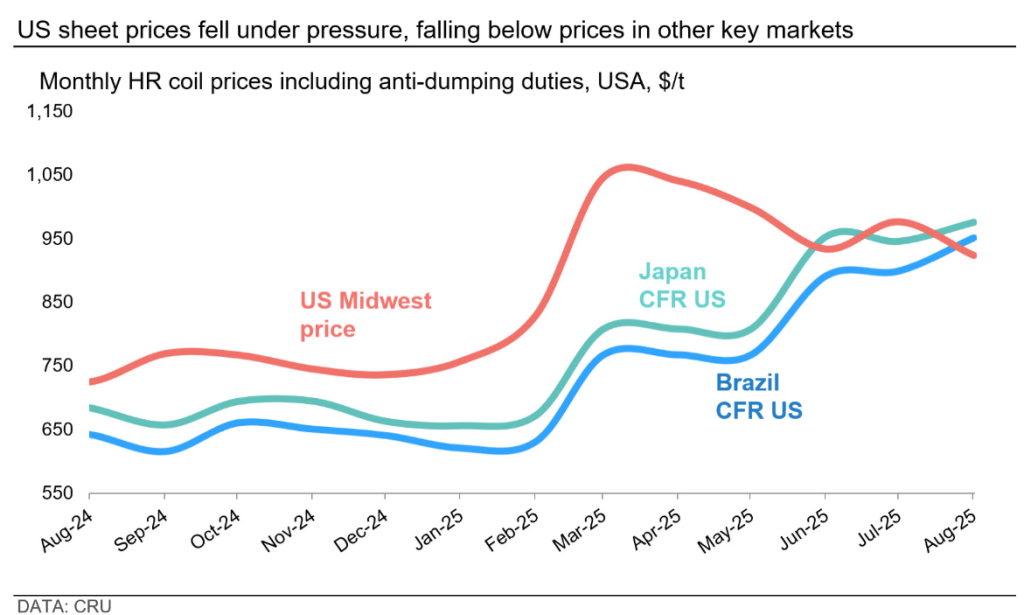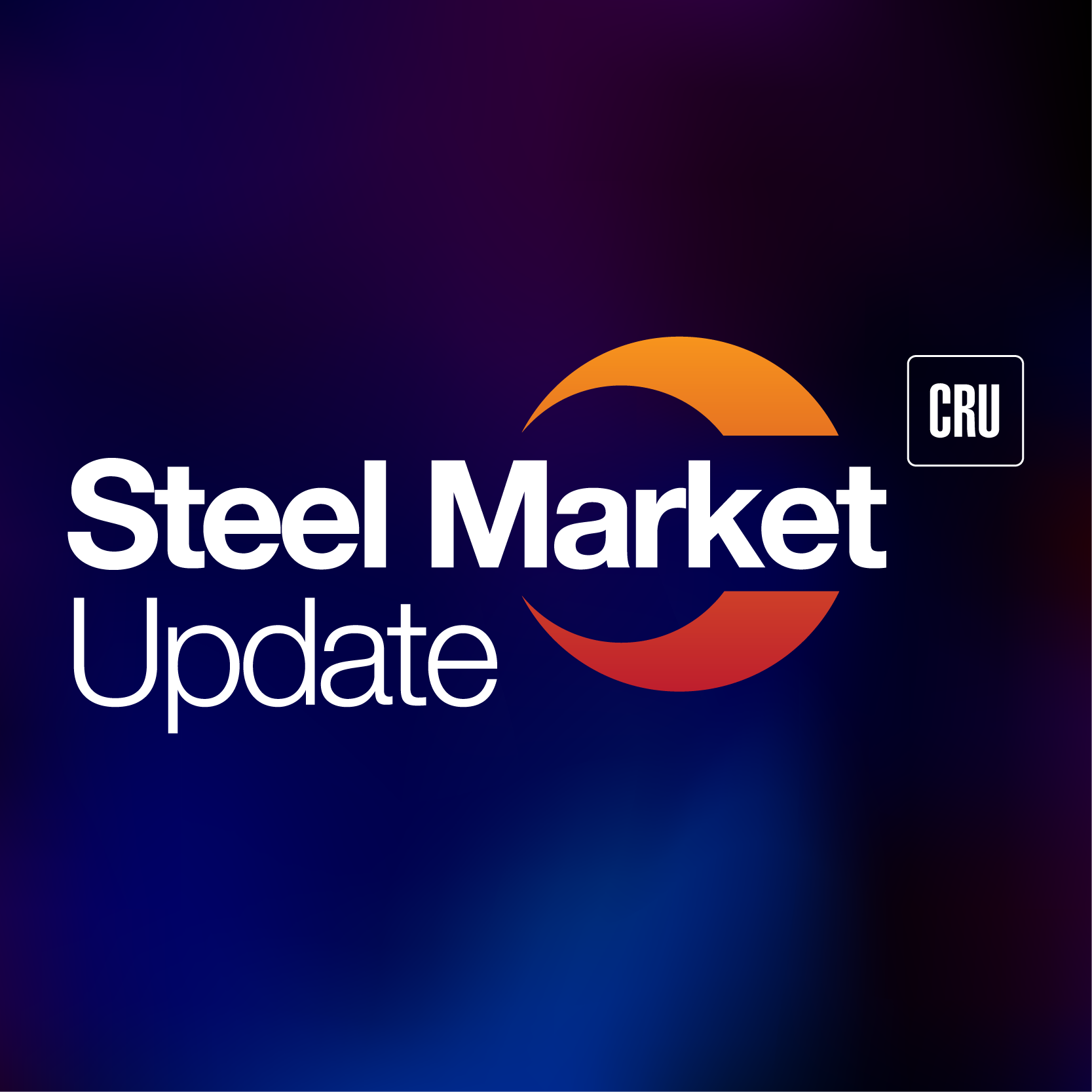Analysis
August 22, 2025
CRU: Lower sheet prices have pulled back demand for imports
Written by Brett Reed & Diego Giangreco
On Aug. 15, the US Commerce Department expanded the scope of Section 232 tariffs, adding over 400 HTS codes to the list of steel and aluminum derivative products covered under the Section 232 tariffs. Domestic sheet prices in the US remained under pressure, limiting interest in imports, while domestic prices for longs products continued to rise. Longs imports have also been limited, though, as import prices are at-or-near domestic levels.
Sheet prices in the US are under pressure, limiting imports
Seasonally slower summer demand has persisted in August in the North American market, leading to lower sheet prices in the US. Market participants report lower bookings of imports, preferring domestic mills due to the tariffs.
However, new capacity appears to have increased faster than imports have fallen back. These overall market dynamics of weaker demand, rising domestic supply, and excess inventories have continued to pressure US sheet domestic prices, which fell below import prices when considering tariffs and transportation.
Conversely, US longs prices increased over the past month as tariffs pushed up import prices and buyers turned to the limited domestic material. Supply constraints due to lower imports for specific wire rod grades, rebar, and structurals also provided upward support for prices.
Longs imports have also been limited over the last month as prices are at-or-near domestic levels. However, some grades that require imports (like tire cord) are seeing prices stabilize as the impact from higher tariffs have already taken effect. Rebar imports for July are down nearly 60% year over year (y/y), while wire rod imports are down about 18% y/y.
On Aug. 15, the US Commerce Department expanded the scope of Section 232 tariffs, adding over 400 HTS codes to the list of steel and aluminum derivative products covered under the Section 232 tariffs. Items added to the S232 covered derivatives list include wind turbines and their parts and components, mobile cranes, bulldozers and other heavy equipment, railcars, furniture, compressors and pumps, and hundreds of other consumer and industrial products.

Brazilian slab export prices remained stable m/m
Brazilian slab prices remained stable month over month (m/m) in August at 490 $/mt (metric ton) FOB Brazil, owing to the 50% Section 232 tariffs in the US — Brazil’s main export market — and stronger competition from other regions, as Brazilian exporters are no longer exempt from Section 232 tariffs.
In terms of trade, export volumes fell by 10% m/m in July. Exports to North America declined in both volume and share of total exports m/m, accounting for 67% of Brazil’s total slab exports. Europe accounted for 24% of total slab exports, with the remainder going to Argentina.
The analysis above was first published by CRU. To learn about CRU’s global commodities research and analysis services, visit www.crugroup.com.






